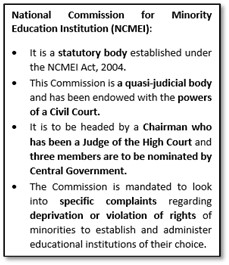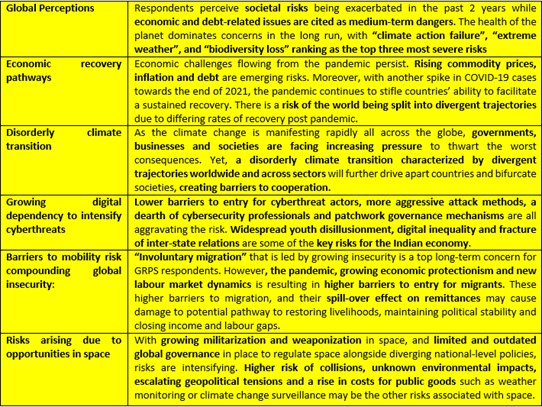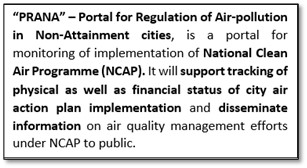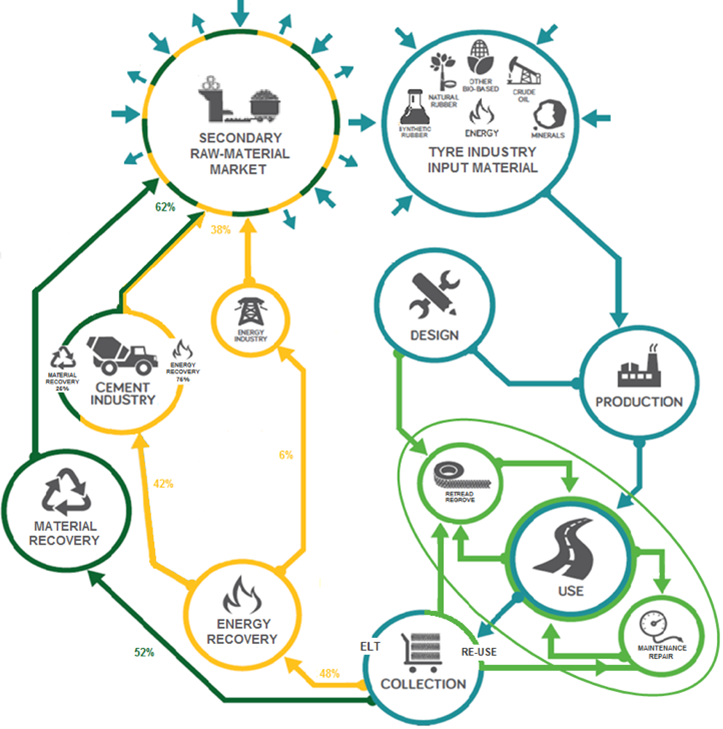Friday, 14th January 2022
Curbing Drug trafficking
In News
The Union Home ministry has urged the states to coordinate with central agencies in curbing the menace of drug trafficking in India.
About the News
- Narcotics Control Bureau (NCB) had organised a meeting of the Apex Level Committee of Narco Coordination Center (NCORD).
- With Union minister of Home Affairs as chairman, it was attended by union and state Secretaries, Director Generals of Paramilitary Forces as well as Director Generals of State Police.
What are the major Challenges related to illicit drug proliferation?
- Problem of drug addiction is a big challenge for national security.
- The market for drugs is on the rise as narcotics worth 1,881 crores were seized between 2018 and 2021, which is three times that of drugs seized between 2011 and 2014 (Rs. 604 crore).
- Scanning of incoming and outgoing containers is a major challenge as nearly 60-70 percent of narcotics drugs are smuggled mainly through the sea route.
- Lack of information system to detect use of Dark Net and Crypto-currency in the area of illegal drugs.
- Lack of effective mechanism for information exchange between various institutions/agencies, including an integrated drug data depository.
- Other challenges include - threats of terrorism and global terror groups, terror financing, narco-terrorism, organised crime-terror nexus, illicit use of cyber space, movement of foreign terrorist fighters etc.
Major recommendations by the Home minister at the NCORD Meeting
- Co-ordination Mechanism between Agencies: Creation of a Dedicated Anti-Narcotics Task Force (ANTF) under DGPs in all states which will work as State NCORD secretariats.
- Formation of a central NCORD unit under NCB at national level.
- Preparation of Narcotics Training Module at national level to train the police, CAPF personnel, prosecutors and people from civil departments.
- Setting up of an Inter-Ministerial Committee to curb misuse of dual-use precursor chemicals.
- Special efforts should be made by all coastal States and UTs and State NCORD Committee meetings to coordinate with stakeholders including Coast Guard, Navy, Ports Authority
- Effective Monitoring Steps: Arrangement of Container Scanners and related equipment for scanning of incoming and outgoing containers at all ports.
- Development of a Narco-Canine Pool at the national level by NCB in coordination with NSG and State police.
- National Narcotics Call Centre ‘MANAS’ and an integrated NCORD portal at the central level should be set up which will act as an effective mechanism for information exchange between various institutions/agencies.
- An effective system to be put in place to stop increasing use of Dark Net and Crypto-currency in illegal drugs trade.
- Preventive Steps: Illegal drug cultivation to be curbed using drones, satellite and other technology. Setting up of drug de-addiction centres in all major prison. Especially chapters related to drug abuse and its ill-effects should be added in the school curriculum.
Sources:
United Nations World Economic Situation and Prospects (WESP) 2022
In News
The flagship UN World Economic Situation and Prospects (WESP) 2022 report said that India's GDP is forecast to grow at 6.5 per cent in fiscal year 2022, a contraction from the estimated growth of 8.4 per cent in fiscal year 2021.
State of Indian Economy
- Economic recovery is on a solid path, amid rapid vaccination progress, less stringent social restrictions and still supportive fiscal and monetary stances.
- Despite a robust export growth and public investments, high oil prices and coal shortages could put the brakes on economic activity in the near term.
- In the medium-term, scarring effects from higher public and private debt or permanent impacts on labour markets could reduce potential growth and prospects for poverty reduction.
- Due to a stronger external position and measures to minimise risks to bank balance sheets, India is in better position to navigate financial turbulence than during the 2008-09 crisis. Yet, it will remain crucial to encourage private investment to support inclusive growth beyond the recovery.
- Inflation is expected to decelerate throughout 2022, continuing a trend observed since the second half of 2021 when relatively restrained food prices compensated for higher oil prices. A sudden and renewed rise in food inflation, however, due to unpredictable weather, broader supply disruptions and higher agricultural prices, could undermine food security, reduce real incomes and increase hunger across the region.
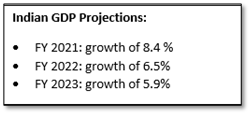
State of Global Economy
- After a strong recovery in 2021, global growth is expected to grow at a slower pace amid new waves of COVID-19 infections, persistent labour market challenges, lingering supply-chain constraints and rising inflationary pressures with divergences in the pace of recovery across countries and regions.
- Adverse impacts of the pandemic on growth and employment have significantly undermined progress on global poverty reduction, dashing hopes of achieving the Sustainable Development Goal of ending extreme poverty.
- International trade and investment registered mixed performance. Global trade in goods surpassed the pre-pandemic level. Trade in services has remained subdued, however, as many cross-border services, particularly international travel and tourism, have yet to recover.
- Employment levels are projected to remain well below pre-pandemic levels during 2022–2023 and possibly beyond. While labour markets in developed countries are gradually improving as recovery gathers pace, employment growth in developing countries remains weak amid lower vaccination progress and limited stimulus spending.
- Higher inequality, both within and between countries may emerge as a longer-term legacy of the COVID-19 crisis. In particular, the crisis has exacerbated the gender divide, especially in developing countries.

The Path to Recovery
- The pandemic triggered an unprecedented monetary policy response from economies and Central banks across the world, particularly the speed, scale and scope of fiscal measures. APPs have become a primary stimulus tool in developed countries.
- Although there were short term benefits, prolonged period of ultraloose monetary policies like APPs to keep long-term interest rates low, has created significant macroeconomic and financial vulnerabilities.
- Governments around the world will need to continue accommodative fiscal policies to help ensure a robust, inclusive and sustainable recovery.
- Reinvigorating multilateralism will remain critical to contain the pandemic and accelerate a robust and inclusive global recovery amid unequal access to vaccines and inadequate commitments to addressing debt challenges.
- To mitigate the adverse effects of APPs and facilitate the unwinding process, a set of complementary policies should be put in place. Fiscal and taxation policy reforms can minimize the adverse side effects of APPs. Finally, APPs offer central banks an opportunity to finance climate action, mitigate climate risks and help transition to a low-carbon economy.

Sources:
Move to amend IPC, CrPC, and Evidence Act
In News
The Union Home Ministry has sought suggestions from Members of Parliament and other stakeholders on the proposed amendments in the Indian Penal Code, CrPC and the Indian Evidence Act.
About the News
- There is need for a comprehensive review of the criminal laws, especially the IPC 1860, the Code of Criminal Procedure (CrPC) 1973 and the Indian Evidence Act 1872 to adapt them in accordance with the contemporary needs and aspirations of the people.
- This is for creating a people-centric legal structure.
- The Malimath Committee (2000) report had highlighted the fact that the existing criminal justice system seem to weigh in favour of the accused and that it did not adequately focus on justice to the victims of crime.

Understanding these Laws
- The Indian Penal Code (IPC):
- It is the official criminal code of India that intends to cover all substantive aspects of criminal law.
- It was drafted on the recommendations of first law commission of India established in 1834 under the Charter Act of 1833under the chairmanship of Sir Thomas Macaulay.
- It came into force in 1862.
- Since its inception, the Code has gone through several amendments times and is now supplemented by other criminal provisions.

- The Criminal procedure Code (CrPc):
- The Code of Criminal Procedure or CrPC is the main legislation on procedure for administration of substantive criminal lawin India.
- It was enacted in 1973 and provides the machinery for the investigation of crime, crime, apprehension of suspected criminals, collection of evidence, determination of guilt or innocence, determination of punishment of the guilty etc.
- Indian Evidence Act:
- The Indian Evidence Act was passed by the Imperial Legislative Council in 1872, during the British Raj.
- It contains a set of rules and allied issues governing admissibility of evidence in the Indian courts of law.
Source:
- HM Amit Shah seeks suggestions of MPs, other stakeholders on move to amend IPC, CrPC, Evidence Act
- Amit Shah seeks suggestions from MPs, other stakeholders on move to amend IPC, CrPC, Evidence Act
Image Source:
Food Corporation of India
On January 14, 1965, under the Food Corporation Act, 1964, the Food Corporation of India (FCI) was set up in the Department, as the country was facing major shortage of food grains, especially wheat. Since its inception, FCI has played a significant role in India's success in transforming the crisis management oriented food security into a stable security system. The primary purpose of Food Corporation of India (FCI) included the purchase, storage, movement transport, distribution and sale of food grains and other foodstuff. The objective was to safeguard the interests of farmers, maintain buffer stocks for food security and make grains accessible at reasonable prices to the weaker and vulnerable through the public distribution system. An important idea during the era of shortages, inflation and the related problems accompanying them, the role of the FCI is being questioned today, when India has a food surplus.

Source:
Indian Judiciary: Challenges of future
In News
Recently, the CJI expressed his views about the future challenges that the Indian Judiciary may face, at a lecture.
Future Challenges to the Indian Judiciary
- Need for Domain Expertise: Rapid development in science and technology has led to new types of problems which are complex and lie outside the domain of current judicial system.
- Problems related to internet: Sale of illegal material on the dark web, identity theft, fraudulent online transactions, hacking, spread of defamatory content and hate speech, etc. There are emerging technologists like AI and “Metaverse”.
- Money laundering or crime funding through virtual currencies: At present, even understanding the mechanisms underlying such an offence might be beyond our Judges and investigators. An additional layer of complexity relates to issue of jurisdiction over the above.
- Rise in specialized regulatory authorities like Competition Commission, TRAI, SEBI etc. has led to complexities in adjudicating cases related to them. However, no such provision to co-opt experts is available to the judiciary, causing difficulties in deciding appeals.
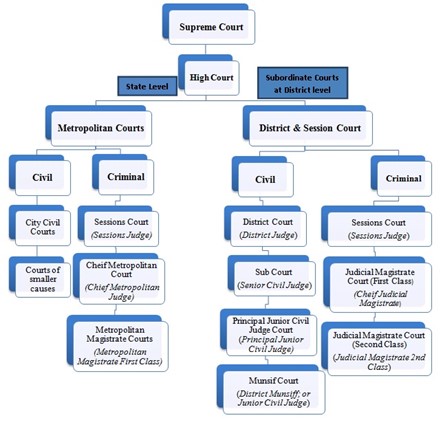
- Absence of Well-Considered Legislation: A lack of foresight in legislating can directly result in the clogging of courts. For example, the introduction of the Bihar Prohibition Act in 2016 resulted in the High Court being clogged with bail applications. Un-refined law leads to a mushrooming of litigation.
- Non-Cooperative Executive: There have been instances which reflected a growing tendency to disregard orders by the executive. Ensuring justice is not the responsibility of the judiciary alone. There are problems like judicial vacancies appointment of prosecutors, infrastructural problems etc. which need to be taken care of by the Executive.
- Dysfunctional Criminal Justice System: Historically, prosecutors in India have been under the control of the government. Hence, they do not act independently. There is lack of effort on part of the Prosecutors to prevent frivolous and non-deserving cases from reaching the courts. Public prosecutors automatically oppose bail applications, without independently applying their mind. They attempt to suppress evidence during trial which could benefit the accused.
- Accountability of Investigations: There is absolutely no system of accountability in place for faulty and inordinately delayed investigations. A person wrongfully incarcerated due to false implication loses his right to liberty, property, etc. There is no real remedy left for him and no compensation whatsoever even after an acquittal.
- New Threats to the Judiciary: In recent times, physical attacks on judicial officers are on the rise. At times, there are also concerted campaigns in print and social media against judges if parties do not get a favourable order. These attacks appear to be sponsored and synchronised.
- Media Trials: Another aspect which affects the fair functioning and independence of judiciary is the rising number of media trials. New media tools have enormous amplifying ability but appear to be incapable of distinguishing between right and wrong, good and bad and the real and fake.
- Increasing Judicial Resilience: Virtual hearings allowed Court proceedings to take place at the peak of the pandemic. It proved to be an essential tool towards enhancing access to justice.
- But, the main challenge of virtual hearings is to turn it into an effective system. Advocates and litigants who are from rural areas, smaller towns or who are economically weaker get excluded.

How to tackle the Future Challenges?
- Requirement of domain expertise: There is not only the need of highly trained judges and lawyers well versed in fundamental legal principles, but also those with an understanding of developments across various fields. It is necessary to have continued judicial training from technical experts. Legal education needs to keep pace with the times and constantly update their curricula.
- Unclogging of Courts through efficient Legislation: A proposed law can only be refined through the involvement of all stakeholders and through meaningful debate. There is need for optimum use of the Parliamentary standing committees, as such scrutiny improves the quality of legislations.
- Co-ordination from Executive: Court orders are only good when they get executed. The executive needs to assist and co-operate for the rule of law to prevail in the nation. Unless the other two coordinate organs make sincere efforts to fill the judicial vacancies, appoint prosecutors, strengthen infrastructure, and make laws with a clear foresight, judiciary cannot be held responsible alone.
- Independence of Public Prosecutors: The responsibility of a public prosecutor is immense. They act as gate keepers who ensure that rights of citizens are not sacrificed and that citizens are not harassed through malicious prosecutions. In order to insulate the public prosecutors, an independent selection committee may be constituted for their appointment.
- Safety of Judges and Judicial Officers: The law enforcing agencies, particularly the specialised agencies, need to deal with such malicious attacks on the Judiciary effectively. The Governments are expected and duty bound to create a secure environment so that the judges and judicial officers can function fearlessly.
- Regulating Media Trials: Media trials cannot be a guiding factor in deciding cases. There is need for mechanism to deal with media trials.
- Strengthening Virtual Courts: Though Virtual hearings are just one method to increase the resilience of the judicial system, this endeavour still needs much introspection and we need to develop tailor-made platforms to meet the specialized needs of the judiciary.
Conclusion: The Courts have played an important role in ensuring that the rights enshrined in the Constitution are not a dead letter. The judiciary has reinforced the idea that justice demands balancing the needs of an individual with the welfare of the community. It is because of these reasons that, today, we thrive as the largest democracy governed by a written Constitution. As the Courts have immensely contributed towards the establishment of a constitutional culture in the nation, it calls for a cooperative effort by all organs of the State, judges, advocates, academicians, and the public at large to strengthen the Indian Judicial System.
Question: The Indian Judicial system faces challenges at multiple fronts. Elaborate. What can be effective mechanism to ameliorate these challenges?
Sources:
Strange structures made by strong wind
This is image of structures are caused by wind erosion on shores of Lake Michigan, USA. As per media reports, the odd structures were created when a high wind eroded frozen sand along the lakeshore. The process imitates what happens when a river erodes land and creates a canyon. Except here, the process is a lot quicker. The faster the wind, the taller are the structures. These formations usually last for a couple of days before falling off.

Source:
‘Rythu Bandhu’ Scheme
- Context: ‘Rythu Bandhu’ Scheme has been disbursing 50k since its inception through Direct Benefit Transfer.
- Rythu Bandhu or Farmers’ Investment Support Scheme (FISS) is a welfare program to support farmer’s investment for two crops a year launched by the Telangana
- The scheme was launched in 2018 targeting marginal and small farmers having less than 2 acres of land holding to bring them out of vicious cycle of rural indebtedness.
- Under the scheme, the government provides ₹5000 per acre per season to support the farm investment of 60 lakh farmers, twice a year, for rabi (Yasangi) and kharif (Rainy) seasons.
- This is a first direct farmer investment support scheme in India, where the cash is paid directly.
- This scheme helps the farmers sell more and make them financially stable.
- In order to avail this scheme, the farmers must be a resident of Telangana and must own the land.

Source:
Image Source:
Bacteria as Art Restorer
- Context: Art restorers in Italy have used strains of grime eating bacteria for bio restoration of Classical Art.
- Art restorers usually employ chemical agents and, more recently laser techniques, to remove dirt, oil, glue, or pollutants from monuments, stoneworks, and paintings.
- However, strains of bacteria were used by researchers for the first time in 1980s (bacteria Desulfovibrio vulgaris to clean a marble monument in the US).
- This micro-organism was thus recognised to protect the artistic heritage of humanity by eating away the thick black crust. A few of the microorganisms were found to digest protein.
- The living bacterial cells are generally suspended in a gel and applied to the vertical walls and left for 24 and 48 hours. When the gel is removed, the inorganic dark brown layer in the form of dust deposits and pollutants are found to be removed.
- This method of bio restoration (employing calcifying bacteria) can save many of India’s monuments too specifically Taj Mahal that has been witnessing discolouration due to persistent pollution.

Source:
Ranjitsinh Jhala Committee on Tree Conservation
- Context: The Supreme Court has appointed a 7-member expert committee under MK Ranjitsinh Jhala for tree conservation.
- The committee will assess the value of trees cut for development projects on non-forest land.
- Recommendations of the Committee:
- It has recommended the need for a tree conservation authority at the state and local levels for overseeing compensatory afforestation and to act as custodians of public-owned trees on non-forest land (PTNFL).
- The committee favours a cost-based approach.
- To set up large-scale national research project to conduct a species-specific tree ecosystem service valuation to arrive at their net present value
- Proposed the criteria for assessing the value by two methods – transplantation cost method and substitution cost method.
- Need for a national model Act that will codify the functions, powers and composition of the tree conservation authority at various levels and mainstream tree conservation aspects.
- All these will enable India to achieve its commitment to Nationally Determined Contributions of creating an additional carbon sink of 2.5 to 3 billion tons of CO2 equivalent through additional forest and tree cover by 2030.
- Tree conservation has to be given enough emphasis as it finds mention in the constitution (Article 21 of Fundamental Rights and Article 48-A of DPSP)
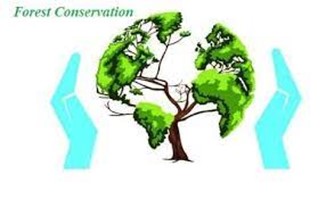
Source:
- SC-appointed committee proposes tree conservation authority in every state
- Climate Change A Growing Concern: SC Constitutes Expert Committee For Formulating Guidelines On Felling Of Trees For Developmental Projects
Image Source:
Gangasagar Mela
- Context: Calcutta HC has allowed Ganga Sagar Mela to be held in West Bengal amid the 3rd wave of the pandemic.
- The HC has ordered some norms which include 'Covid-safe' drones, spraying devoteed with holy water as they chanted, in a sanitary twist to the traditional bath. Further, only those having a negative RT-PCR report within 72 hours have been permitted to take part in the festivities.
- The Gangasagar Mela is held annually at the Sagar Island of West Bengal during the Makar Sankranti festival where thousands of pilgrims come to the spot to take a dip in the holy Ganga River.
- It is the second-largest religious congregation in the country that takes place at the confluence of Ganga and Bay of Bengal after Kumbh Mela.
- It is the sacred place, primarily important for the temple of Sage Kapil who introduced the doctrine of Sankhya Philosophy.
- As per mythology, it is believed that a dip in the holy water will wash away all the sorrows and sins. With this belief, millions visit the Kapil Muni ashram with the hymn " Sab Tirth Bar Bar Ganga Sagar Ekbar."

Source:
Liberal economics creates illiberal societies: TH
Essence: This article makes a case that advocates of economic liberalization are unintentionally promoting anti-liberal societies and authoritarian regimes. Two widely advocated and adopted systems of communism and capitalism have failed. While the former increased equality and raised living standards of masses, it did so only at the cost of personal liberty. Capitalism fueled the pace of economic growth but failed to ensure equity and ecological sustainability.
Hopelessness arising as a consequence of failed economics is leading to rise of authoritarianism, nationalism, and identity politics. Author prescribes a new form of “Gandhian” democratic socialism along with cooperative economic enterprises to ensure wealth creation with equity and sustainability.
Why should you read this article?
- To understand linkage between economic system and polity.
- To understand one of the theories to explain increasing inequality and rising authoritarian politics.
- To get an example that right intention does not necessarily lead to right outcomes (For Essay)
Source:
Misleading picture of household wealth: HBL
Essence: Reports about how old and new businesspeople amassed massive amounts of wealth in short periods of time have been prevalent in recent years, when the economy as a whole has performed poorly. Conspicuous consumption appears to be on the rise as well, which has resulted in rise of India's income and wealth inequality. It's difficult to get hard data on the extent of the growth because, one, of lack of formal surveys of income patterns in different income strata. Two, it is ineffective to use consumption surveys and treat consumption expenditure as a proxy for income. And, because evaluating household durable assets, such as bullion, which is a prominent form of wealth holding among the middle and upper classes, has proven challenging in recent rounds, they have been kept out of the poll. This leads to a significant underestimating of wealth holdings, particularly in the highest asset holding segments. All of this shows that these official data may not give enough solid evidence to allow accurate assessments of household wealth levels and trends.
Why should you read this article?
- To comprehend the causes of rising income and wealth disparity in India, as well as why it is difficult to obtain hard data on the magnitude of wealth growth.
- To comprehend why valuing home durable assets has proven difficult in recent years.
Source:
A Journey of 21,000kms to Save Lives!
Background story
- More than 12,000 people fail to get blood each day.
- Many persons in need of blood during medical procedures/operations, suffering from diseases die due to unavailability of blood donors.
Simply Blood
- Kiran Verma, a Delhi based youth, started an NGO, Change with One Foundation and a campaign, Simply Blood to raise awareness amongst people to donate blood.
- In Dec 2021, he started a walk of 21,000kms from Trivandrum to mobilize youth for this noble cause.
- The walk, spanned over 2 years, will be the longest blood donation awareness campaign by an individual.
- His previous long-distance walks and campaigns have helped save more than 35,000 lives in the country.
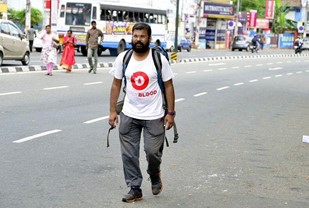
Where can this case study be used
- Dedication towards society, Community service, Initiative taking ability, Altruism.
Quote
- The best way to find yourself is to lose yourself in the service of others. (Gandhi ji)
Source:
Share the article
Get Latest Updates on Offers, Event dates, and free Mentorship sessions.

Get in touch with our Expert Academic Counsellors 👋
FAQs
UPSC Daily Current Affairs focuses on learning current events on a daily basis. An aspirant needs to study regular and updated information about current events, news, and relevant topics that are important for UPSC aspirants. It covers national and international affairs, government policies, socio-economic issues, science and technology advancements, and more.
UPSC Daily Current Affairs provides aspirants with a concise and comprehensive overview of the latest happenings and developments across various fields. It helps aspirants stay updated with current affairs and provides them with valuable insights and analysis, which are essential for answering questions in the UPSC examinations. It enhances their knowledge, analytical skills, and ability to connect current affairs with the UPSC syllabus.
UPSC Daily Current Affairs covers a wide range of topics, including politics, economics, science and technology, environment, social issues, governance, international relations, and more. It offers news summaries, in-depth analyses, editorials, opinion pieces, and relevant study materials. It also provides practice questions and quizzes to help aspirants test their understanding of current affairs.
Edukemy's UPSC Daily Current Affairs can be accessed through:
- UPSC Daily Current Affairs can be accessed through Current Affairs tab at the top of the Main Page of Edukemy.
- Edukemy Mobile app: The Daily Current Affairs can also be access through Edukemy Mobile App.
- Social media: Follow Edukemy’s official social media accounts or pages that provide UPSC Daily Current Affairs updates, including Facebook, Twitter, or Telegram channels.

